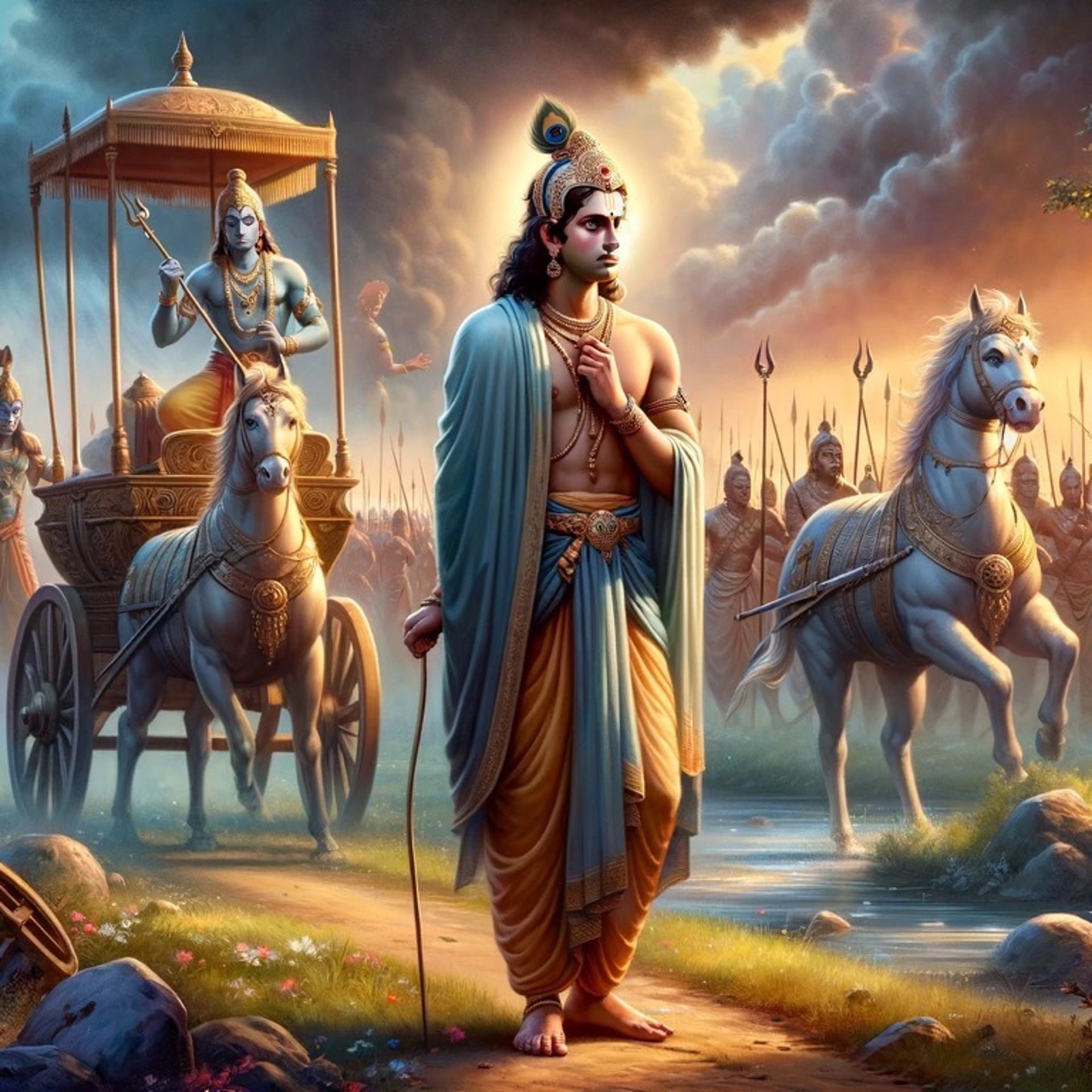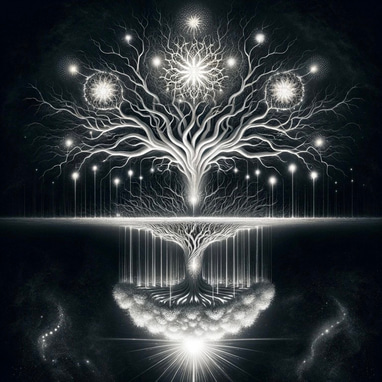
Cognitive Dissonance through the Lens of Bhagavad Gita: An Insight into Arjuna’s Dilemma
This article explores the concept of cognitive dissonance by examining Arjuna’s psychological struggle in the Bhagavad Gita, Chapter 2, Verse 7, highlighting the relevance of ancient wisdom in understanding and resolving internal conflicts.
PHILOSOPHYINTERDICIPLINARY WESTERN SCIENCE PSYCHOLOGY
2/6/20242 min read
Abstract:
This article explores the psychological concept of cognitive dissonance through the ancient philosophical context of the Bhagavad Gita, specifically focusing on Chapter 2, Verse 7, where Arjuna expresses his profound inner conflict and seeks guidance from Krishna. By correlating Arjuna’s dilemma with cognitive dissonance, we aim to illuminate the timeless relevance of this epic in understanding human psychology and the quest for resolution of internal conflicts.
Introduction:
Cognitive dissonance, a term coined by Leon Festinger in 1957, describes the psychological discomfort experienced when holding two or more contradictory beliefs, values, or ideas. The Bhagavad Gita, a 700-verse Hindu scripture that is part of the Indian epic Mahabharata, presents a narrative that is ripe for analysis through the lens of cognitive dissonance. In Chapter 2, Verse 7, Arjuna, a warrior prince, finds himself unable to decide on the battlefield, torn between his duties as a warrior and his moral qualms about killing his kin. This verse serves as a profound example of cognitive dissonance and provides insights into the resolution of such conflicts.
Analysis:
Arjuna’s dilemma in the Bhagavad Gita mirrors the essence of cognitive dissonance. He is caught between his Kshatriya duty (Dharma) to fight in the war and his compassion and attachment to his family, leading to a paralyzing psychological conflict (Festinger, 1957). Arjuna’s articulation of his inability to discern the right course of action reflects a classic state of cognitive dissonance, where an individual experiences distress due to conflicting cognitions.
The resolution offered by Krishna, who counsels Arjuna on his duties and the nature of the self, can be interpreted through the process of reducing cognitive dissonance. Krishna’s discourse, which encompasses the philosophy of duty, detachment, and the eternal nature of the soul, offers a pathway to reconcile conflicting beliefs by realigning Arjuna’s values towards a higher understanding of duty and morality beyond personal loss and gain.
Discussion:
The Bhagavad Gita’s treatment of Arjuna’s conflict provides a philosophical framework for addressing cognitive dissonance. Krishna’s counsel emphasizes the importance of adhering to one’s duty while maintaining detachment from the results of one’s actions, a principle that can be applied to mitigate cognitive dissonance by prioritizing overarching values over conflicting personal desires or beliefs.
Moreover, the Gita introduces the concept of self-awareness and the transient nature of the physical world, suggesting that a deeper understanding of one’s true self and the impermanence of material attachments can facilitate the resolution of cognitive dissonance. By viewing personal conflicts from a broader perspective, individuals can find harmony between conflicting beliefs and actions.
Conclusion:
The Bhagavad Gita’s narrative, particularly Chapter 2, Verse 7, offers profound insights into the nature of cognitive dissonance and its resolution. Arjuna’s dilemma and Krishna’s guidance provide a valuable framework for understanding and addressing the psychological conflicts faced by individuals. The Gita teaches that through self-awareness, detachment, and adherence to duty, one can navigate the complexities of cognitive dissonance and achieve a state of inner peace and clarity.
References:
• Festinger, L. (1957). A Theory of Cognitive Dissonance. Stanford University Press.
• Bhagavad Gita As It Is, Chapter 2, Verse 7, translated by A.C. Bhaktivedanta Swami Prabhupada.


